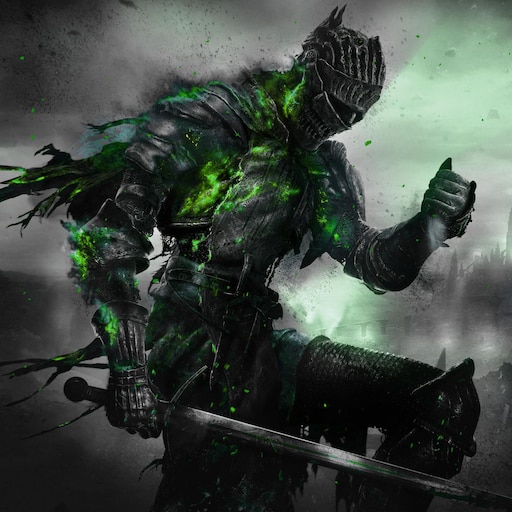Tldw: guy tests the RX 6800 at 1080p, 1440p and 4k across 19 games on Windows 11 vs Nobara 41.
Allegedly, nobara beats windows on all games except 2 (witcher 3 and CS2), across almost all resolutions, by around single digit percents.
Also: This was on kernel 6.11, which does not have the new NTSYNC driver (coming in 6.14). It’s going to get even better soon.
CS2 was tested on proton, but CS2 runs natively. It’s not a useful comparison.
Edit: Someone pointed out that Nobara has already manually backpatched NTSYNC into its kernel.
Nobara uses a custom kernel with lots of performance tweaks and wine-compatibility patches. It has had NTSYNC for almost a year already. Also, NTSYNC is not much faster than FSYNC, that many kernels and distros (including SteamOS) have been using since 2021.
NTsync won’t change much for performance compared to Nobara with Proton. Proton has used esync and fsync for many years now which provide similar performance, but with flaws that prevent them from being upstreamable to Wine. NTSync will allow upstream wine to match fsync performance and hopefully fix some bugs.
NTsync is not the same as Fsync, it allows for kernel acceleration of NT sync primitives, increasing speed over current wine/Proton builds.
It’s not the same, but it provides similar performance. The performance gains are being compared to stock wine, not to Proton with esync or fsync.
I used to play CSGO on both Windows and Linux for a while, and Linux always outperformed Windows by a solid margin. It wasn’t even close, I never even thought to try running it through Proton.
CS2 was tested on proton, but CS2 runs natively. It’s not a useful comparison.
He said in the video that he tried to run it natively, but it just wouldn’t start somehow.
This is what I came for. The fact it’s close and reading blows is good enough for me.
I have a steam deck and I’ve been impressed. Linux gaming has come a long way.
Whats Ubique about Nobra? Been looking at Linux distros to replace windows 10 since EOL is coming up
Nobara is the oft pointed to gaming distro for Linux. There are three major flavors of Linux as far as I can tell (I did some research for a similar switch, which I haven’t completed because I have some stupid digital coins divesting and when that’s done I’m coming over). There is Debian, Fedora, and Arch. The easiest and simplest way for me to understand them is scaling them in terms of stability and latest releases. Debian is supposedly super stable but furthest behind on releases because of all the stability testing. Arch is least stable but on all of the latest releases. Fedora is the middle ground, more stable but slightly behind.
Nobara is based on Fedora and is recommended for new Linux users who want to game. The steam deck is on an Arch based distro. Linux Mint, another recommended pick for new comers, is based on Debian.
I am personally porting over to Arch Linux, because I want to have the latest releases and I believe I can sufficiently reduce the instability with a couple of processes. I have it installed on my laptop and it’s been seemingly stable for about a quarter.
You’re basically correct.
There are thousands of individual Linux distros. All you need to be a distro is to put together an operating system and distribute it. Hannah Montana Linux is considered a distro and all that is is Miley Cyrus scented Ubuntu. The vast majority of the time, a distro is a modification - or fork - of another distro. They form family trees in a way; for example, Linux Mint is a fork of Ubuntu which is a fork of Debian.
There are five major family trees in the GNU/Linux space: Debian, Red Hat, Slackware, Arch, and SuSe.
Debian is an older distribution, it was the first that shipped with an online package manager, APT. Today they favor stability and compatibility with older systems, so you might not have the latest features but Debian won’t break your workflow. If you want the Debian experience but a little more up to date, you want to use Debian Testing rather than Stable. Debian is by a good margin the biggest of the family trees, a LOT of stuff is based on Debian including Ubuntu, Mint, Elementary and Pop!_OS.
Red Hat’s big claim to fame is support for Enterprise. If you’re a big business that is going to run Linux on servers or workstations, you may want to pay for Red Hat because then you get professional support staff. Most end users and even small business types will use forks of Red Hat such as Fedora or Rocky Linux (ex CentOS). And for some reason there are Fedora Linux based gaming distros like Nobara.
Slackware and its few forks aim at being the most UNIX-like of the distros and hence they’re nowhere near as popular, there’s a certain old guard that uses it out of sheer stubbornness. The package manager makes a point of not having conflict resolution.
Arch almost breaks the distro model, or it used to at any rate. With a focus on performance and customization, what you downloaded was basically the kernel, coreutils, a shell, a text editor and a package manager. From there you were meant to install what you wanted and only what you wanted, ending up with a system that is custom to your needs and with nothing you don’t use. Nowadays with the archinstall scripts that’s been diluted somewhat but you still get the excellent Wiki and access to the AUR. Some ready-made distros based on Arch include Manjaro and EndeavourOS.
SuSe is basically like Red Hat but German. It’s developed for enterprise solutions and there are forks such as OpenSuSe that sees use on the desktop, though I don’t really encounter a lot of that in the Anglosphere.
Honorable Mention: Gentoo. A distro that is more Arch than Arch; where Arch’s whole deal is building your own OS from pre-compiled binary packages, Gentoo’s package manager distributes source code which gets compiled locally.
Hey, some of us use openSUSE. There are dozens of us!
Seriously though, Tumbleweed is a fantastic distro. If you’ve made the rounds between Arch, Fedora, and Debian distros and still aren’t satisfied, give openSUSE a try. Some things I love:
- rolling and stable versions - I use Leap for servers and Tumbleweed on desktop
- openQA seems to catch breakage because breakage is very rare
- OBS - like the AUR, but it builds your packages on their servers
- RPM - some sites still hand out debs and rpms, so that gives you an option for certain niche software
I spent 5+ years on Arch and loved it, and I’ve been on Tumbleweed for longer now. It’s pretty decent.
There is Debian, Fedora, and Arch
This hurts right in the openSUSE. 😟
Ya, sorry, my bad. Someone else commented that there are five flavors and I was like “oof they must not have come across as realistic or viable options for me very early on”. But you know how it is, memory is fickle. This was the best summary I could do as a very inexperienced Linux person.
Especially nowadays when it doesn’t feel safe using a US product, even FOSS.
Just make sure to either read the Arch News so you can avoid most breaking changes, or use paru as your AUR helper as it has a config option to automatically pull the news for you
Have a spare hard drive I use to test different ones like Ubuntu, mint and the like, but it’s good to know that some gaming focused ones exist
(Any one you recomend for a semi new Linux user other then this one?€
I would personally recommend the base distros and I am a big fan of Fedora myself. Has been rock solid for the last 4 years or so. Although you’ll have to choose a desktop environment as well. I use gnome, which imo just looks and feels really good, although it’s not as easy to customise. You can also pick KDE, which looks more like windows by default but you have so many settings it’s a bit too much imo.
You can always change the desktop later if you really want to, so pick whatever you think you’ll like bestJust pick one and have fun. You can install pretty much any software you want on any distro, “gaming focused” just means some stuff comes preinstalled/preconfigured.
The process to get gaming on pretty much every distro is:
- Install OS
- Install Steam and Heroic
- Download and play games
Your experience will be very similar on whatever distro you choose.
I recommend Mint or Fedora for new users, mostly because they’re popular so getting help should be easy. I personally use openSUSE Tumbleweed though, which is also fantastic.
This is a great explanation except for one detail. Stability refers to release cycles in the Linux world, so your description of stability is a little redundant. The word you’re looking for is reliability, but all 3 of the giants provide that.
The release cycle and the package managers are the two biggest factors that most people decide their distro based off. There are some more considerations as you get deeper into the Linux world, like your init system and whatnot, but those two are the big drivers IME.
nobara is more focused on gaming and includes patches and software to play games without having to tinker a lot. you could use any distro but some games might have performance issues or require additional settings and configuration. nobara gets rid of maintaining that yourself, you might still have to tinker with a few things like launch options but not as in depth as other distros.
another popular distro is bazzite which does similar things, though i feel that’s a bit more advanced to understand some concepts.
if your curious about switching i would recommend, if you can, to install a second hdd (can be cheap/small) and try one or both of them for a week to see what it’s like and how well your games run. also if you don’t like how one looks you can also try different desktop implementations. coming from windows, KDE will feel very familiar.
Still, it’s quite impressive. A translation layer in between and still it’s on par. It would be interesting to see native vs proton versions only.
Depends on the game.
Linux-native Rimworld and Stellaris are (by my measurements) 1.5x-2x slower than Windows. Not by pure FPS, but by simulation speed, which is much more detrimental. The frametimes spikes are awful, tool.
Running them though Proton seems fine, but they still aren’t any faster.
Modded minecraft and Starsector are the opposite. Old java games freaking love linux, apparently.
For reference, I’m running CachyOS (a distro focused on optimization) and used game-native measurement tools.
of the few games I’ve played that had linux versions (Cities Skylines 1, Eurotruck Simulator, American Truck Simulator, Rimworld from what I can recall off the top of my head, there have been others that i cant recall off the top of my head i’m sure), None of them were worth a god damn.
At best unstable and slow, at worst laden with bugs and issues.
Either way, playing the windows version via proton offered a better, more stable, more reliable experience.
Yeah.
People turn their nose at this, but devs have to develop for windows. If they can give their users a better experience targeting Proton, with less time and more refinement and better support than a native port, that’s a-okay with me.
A hilarious situation would be linux superseding Windows for desktop gaming… And Proton still being the standard target. I would love that future.
I agree.
I’d rather time and polish be given to making sure it runs via proton.
Then a half assed linux port, that doesnt work, thats a waste of time, that will be unused and hated, and be held up by devs as an example of “Well, users don’t use the linux version, there for linux isnt a viable target for us to bother with”
deleted by creator
It’s horrendously worse, just look at the TPS on the same save.
But specifically, I used the Dub’s Performance Analyzer frametime graphs. It’s nice since it separates out rendering and simulation.
One note, I am on Nvidia. It’s possible AMD (or Intel?) cards would behave differently.
Modded minecraft and Starsector are the opposite. Old java games freaking love linux, apparently.
It’s less about Java and more about OpenGL. Since it was the only option for quite a long while on Linux, the Linux implementation is fantastic. On Windows, OpenGL was always the third API that needed to be half-assed just so you can say “it works”.
Before AMD “fixed” their Windows OpenGL driver a few years ago, it was not unheard of to get double the frames in Minecraft on Linux compared to Windows.
Running them though Proton seems fine, but they still aren’t any faster.
Running through Proton is still “gaming on Linux,” fyi
Yeah, but most potatoes can run RimWorld, so we’re talking a difference between 2000 and 2500 fps. Not to mention that the game uses forking processes on Linux, which means saves happen in the background instead of freezing your entire game, so I’ll take that any day.
Granted, I’m not an avid Factorio player, so maybe when you have hundreds of hours and millions of enemies on the screen it halts to a crawl, but I usually play without enemies and have never seen the game dip below 60 not even on the Deck.
Yeah, but most potatoes can run RimWorld, so we’re talking a difference between 2000 and 2500 fps. Not to mention that the game uses forking processes on Linux, which means saves happen in the background instead of freezing your entire game, so I’ll take that any day.
I have an overclocked 7800X3D, 6000MHz low latency RAM and… I’m still majorly CPU bound in big, modded colonies. TPS can drop below 180, or slower than realtime (60) if I’m not careful with the game’s settings, especially during raids or with multiple maps loaded, and this causes major frametime spikes too.
Of course, but the video is pointing out that of the games tested, most of them perform better on Linux.
Is that rimworld with or without rocketman?
Tested with rocketman, performance fish and performance optimizer. And modded in general, on a big colony save.
It wasn’t super recent though, not 1.5. But should still be applicable, I suspect.
Yeah I’ve found java and Linux seem to get along very nicely. Minecraft with distant horizons and shaders runs way better on Linux for me than windows.
Is this the year?
It’s always the year
Nah, that was last year really.
People are still migrating. It’s going to take a while. I hope they take the time before October though.
Anyway…
Windows 10 sun setting gonna bring a decent bump.
I think we get our year once critical mass of gamers make that switch
Windows 10 hangers on’ers are probably also more technically savvy than those who get told by a machine that they “have to update”, and then do so.
Ahahahahahhaha what?
That’s what was said when Windows 8 launched, and then again when support ended for Windows 7, and again when extended support ended for Windows 7.
The only thing that ever really had an effect on Linux user numbers was the Steam Deck.
Definitely!
Are we certain that the drivers fully support every feature of the game in Linux? Is this known to be due to better more efficient running and implementations or if certain graphics or physics options are simply not functional in Linux?
Max Payne runs in Linux and did not run on the same hardware on Windows, year of Linux confirmed.
Varies between games, it’s common there’s features missing so it’s not equivalent but often Linux has remained faster when equivalent because its implementation is more efficient. Unless you’re dealing with ray tracing and other recent fancy stuff.
Ray tracing works fine in Ubuntu on my RTX 4080. DLSS too. Might be slower than Windows but I haven’t compared it.
Yes yes will install steam os soonish.
Bazzite is quite good as an alternative with steamos like interface.
And yet Everspace 2 still plays like a slideshow…
that’s simply not true for most cases
Would love to test this, but my Steam install seems permanently screwed up now and I genuinely don’t have the energy to start from scratch and have to go through setting up the Nvidia drivers again.
Not to repurpose this into a “convince me not to uninstall Linux” thread, but… you may try at your peril.













